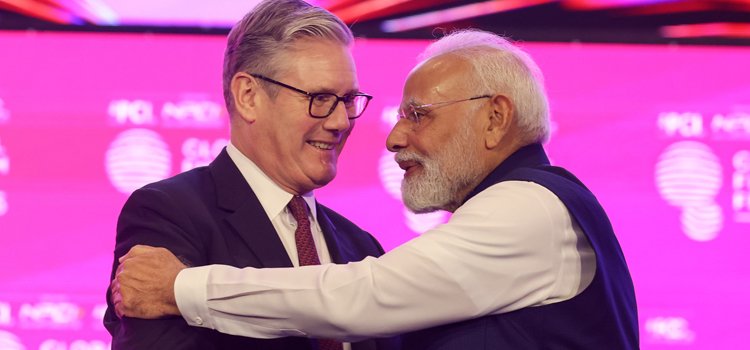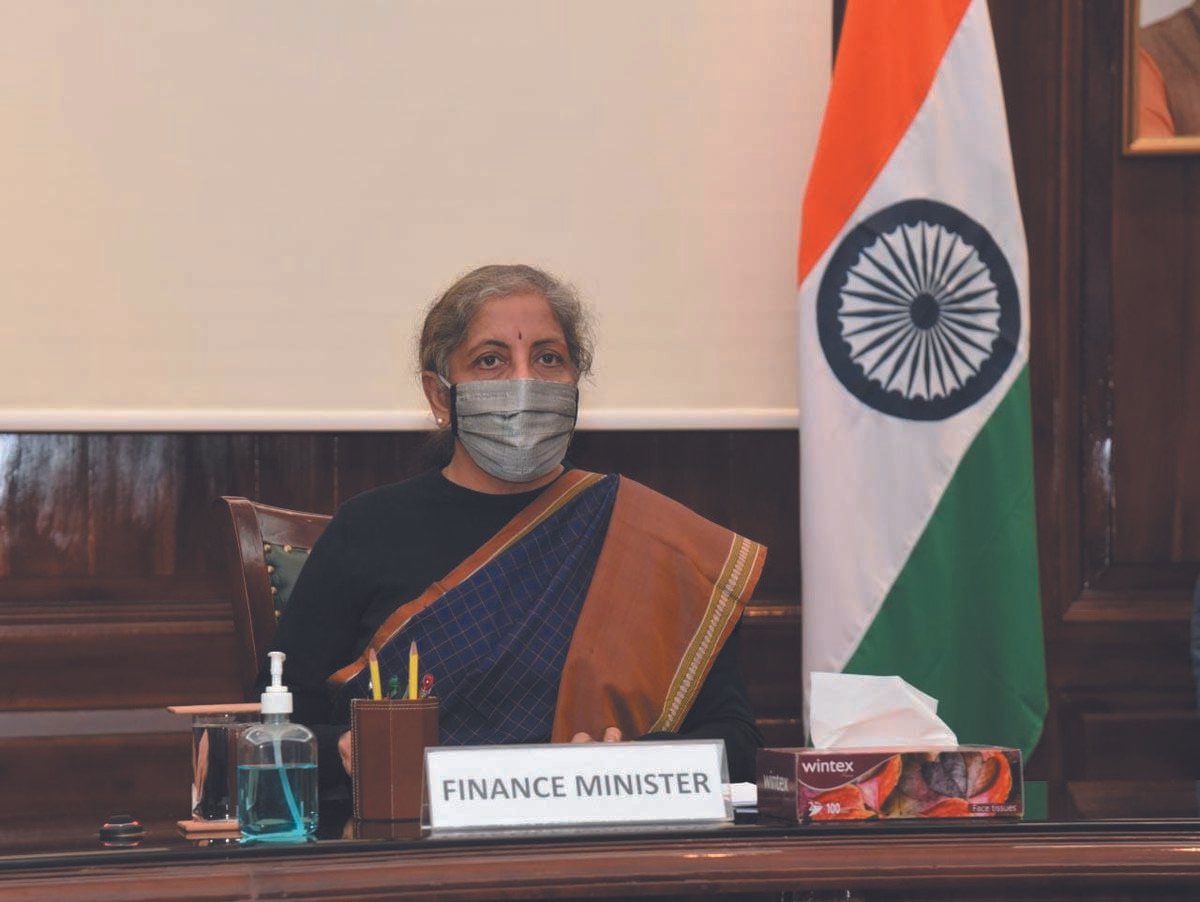WORLD
Emerging markets, including India, shrug off adverse impact of the US Fed's interest rate hike
- IBJ Bureau
- Mar 28, 2022

The long-anticipated interest rate hike by the
Federal Reserve System (US Fed) finally happened this month. In mid-March, the
US central bank raised the Federal Funds Rate (FFR) by 25 basis points (bps) in
a range of 0.25-0.50 per cent. This is the first rate increase by the US Fed
since it had hiked the rate by 25 bps in December 2018. The FFR or the benchmark
interest rate was slashed and anchored near 0 per cent in a range of 0-0.25 per
cent since the beginning of COVID-19 to stimulate a flagging economy.
The recent rate hike is aimed at taming a spiralling
inflation, which has surged to a four-decade high of over 7.5 per cent at the
beginning of 2022 compared to the inflation at the start of 2021. The runaway inflation
had wreaked havoc much before the Russian invasion of Ukraine.
Prices of food products, energy sources and other
commodities have been shooting through the roof since mid-2021 as the world
economy gradually opened up after the COVID-induced lockdowns. Disrupted supply
chains could not keep pace with a spurt in pent-up demand for various products
and services, leading to prices moving sky high.
The Federal Funds Rate or the FFR refers to the
target interest rate set by the Federal Open Market Committee (FOMC), the
policymaking body of the Federal Reserve System. The US Fed only sets this target
rate in a range consisting of a lower limit and an upper limit. The rate itself
is ultimately determined in the overnight lending market, based on the supply
and demand of short-term reserves held by commercial banks. The banks are
guided by the range of the FFR set by the US Fed as they go about either
borrowing or lending – based on their reserve requirement – in the overnight
money market. The reserve requirement is a percentage of the deposits that
banks in the US have to maintain with the US Fed, similar to the Cash Reserve
Ratio (CRR) maintained by Indian banks with the Reserve Bank of India (RBI).
The rate hike by the US Fed will result in a rise in
the lending rate in the overnight money market. This will raise the prime rate –
equivalent to the prime lending rate in India that banks charge their blue-chip
borrowers. The US central bank’s rate hike will push up the cost of funds and
consequently increase various lending rates across the board in the US banking
and financial markets. The higher cost of money will ultimately help in reining
in inflation.
The recent rate increase apart, the FOMC has set a
target to raise the FFR six more times in the six remaining meetings this year.
Accordingly, the US central bank is looking to take the upper limit rate of the
FFR to 1.90 per cent by the year-end. The 2022 targeted FFR will be 1 per cent
more than what was indicated last December. Besides, the FOMC sees three more
hikes in 2023, followed by a halt in hikes in 2024.
Moreover, the FOMC has announced that it will begin
reducing its holding of Treasury securities and mortgage-backed securities
worth nearly $9 trillion in a gradual manner as a part of its
liquidity-tightening measures. These securities have been purchased by the US
central bank from the market over the past few years in the massive bond-buying
programme or quantitative easing (QE) after the 2008 global financial crisis.
The QE was specifically designed to infuse money into the market and push up
economic growth. With inflation raising its head now, the US Fed is all set to
reverse the QE gradually and suck out excess money in the system.
At a news conference after the last month’s FOMC
meet, US Fed Chairman Jerome Powell hinted at starting to slash the central
bank’s balance sheet from May onwards. He also added: “We are attentive to the
risks of further upward pressure on inflation and inflation expectations,”
Powell said at the news conference. “The committee (FOMC) is determined to take
the measures necessary to restore price stability. The US economy is very
strong and well positioned to handle tighter monetary policy.” The FOMC has
raised its inflation estimate at 4.1 per cent by the end of 2022 compared with
the earlier projection of 2.7 per cent in December 2021.
A
reassuring RBI
With inflation surging, central banks across the
world are gearing up to raise policy rates and tighten liquidity. Unlike the
developed countries, India is also hit by slowing economic growth, along with spurting
inflation. This makes the task of the RBI rather challenging. Reassuring the
markets, RBI Governor Shaktikanta Das recently said that the central bank would
ensure abundant liquidity in the market for the credit system to function
normally.
Mr Das added that the RBI was pulling out liquidity that
was provided over the last two years to support various sectors. However, he
stressed that there would be enough money to meet the productive requirements
of the economy.
The RBI chief disclosed that most of the liquidity
that the RBI had injected had a sunset date, and a lot of it had, in fact, come
back. Mr Das disclosed that the central bank had injected a total liquidity
support of about Rs 17 lakh crore. Of that, banks and other finance companies
had utilised about Rs 12 lakh crore. “As I speak today, Rs 5 lakh crore has
already come back, and the rest will mature at the end of the third year, and
some of it will also come back in the intervening period,” he added.
Muted
impact
A hike in the US interest rate has an impact on the
debt and equity markets all over the world. After the US Fed’s signalling,
stock prices went up across the Western markets as the higher interest rates
would fetch bond investors higher returns.
However, unlike during the past US Fed rate hikes,
stock markets in emerging economies, including India, continued to rise. They
shrugged off the impact of the move, resulting in huge outflow of funds by
foreign portfolio investors (FPI).
As investors were expecting a rate hike for the past
few months, the decision of the US central bank did not come as a surprise. Economists
opine that the US rate hike will have only a limited spillover effect on India
as the markets have mostly priced in the impact. Besides, monetary policy in
India will continue to be anchored by domestic macroeconomic conditions rather
than global factors.
“Anticipating the global policy tightening, FPIs have
already exited the Indian equity and debt markets over the past couple of
months, with close to $19 billion outflows since October 2021,” notes Axis Bank
Chief Economist Saugata Bhattacharya. What has cushioned the blow from the FPIs
is sustained buying from domestic institutional investors (DIIs), especially
mutual funds and retail investors. Mutual funds alone shopped for $9 billion of
shares during this period, point out market analysts.
Unlike in the past, India’s macroeconomic
fundamentals are relatively robust this time around. Besides, record-high
foreign exchange (forex) reserves of over $619 billion and market-savvy DIIs
and retail investors make India well prepared to absorb any external shock.





















Report By
View Reporter News